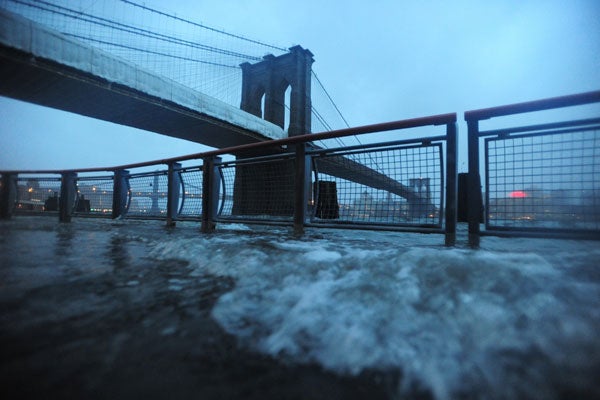Disappointed with the lack of global warming discussion in the current presidential campaign, tabloid climatologists have latched onto Hurricane Sandy as their vehicle for relevance.
The more reserved among them use lines like “Though we cannot prove that global warming caused Hurricane Sandy, the scientists predict there will be more intense hurricanes with global warming.” The trouble with that statement is that there haven’t been more hurricanes, even as CO2 levels have risen.
As Roger Pielke Jr. notes in The Wall Street Journal:
While it’s hardly mentioned in the media, the U.S.is currently in an extended and intense hurricane “drought.” The last Category 3 or stronger storm to make landfall was Wilma in 2005. The more than seven years since then is the longest such span in over a century.
That means that, if patterns return to normal, we should expect more big hurricane strikes without global warming. However, leading “climatologists” like Governor Andrew Cuomo (D–NY), New York City Mayor Mike Bloomberg, and the editors of Bloomberg’s Businessweek seem immune to actual data. Further, they, along with some more legitimate climatologists, ignore the fact that none of the policies proposed—such as Waxman-Markey-style cap and trade—would have any significant impact on global warming.
Nor can even the truest believer in a carbon-driven apocalypse claim that enacting Waxman-Markey would have moderated Sandy’s impact. This is because our CO2 emissions are now below the targets proposed in Waxman-Markey (thanks to low natural gas prices).
But such policies would have an impact on the economy, and subsequently, on human health and welfare.
The average economic damage from a hurricane that makes landfall is about $5 billion. So the $20 billion that Sandy is expected to have caused is roughly four times as costly as an average hurricane (in large part because Sandy hit one of the most intensely developed areas of the U.S.). On the other hand, the economic damage due to Waxman-Markey was estimated to be nearly $300 billion per year for over 20 years. That would be the economic equivalent of about 15 Hurricane Sandys each year for decades—no seven-year hiatus allowed.
There are many things we can do to protect ourselves from the impact of hurricanes—but they don’t include mandating curly light bulbs and smaller cars.
